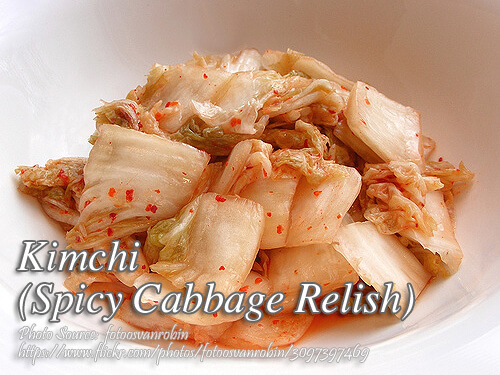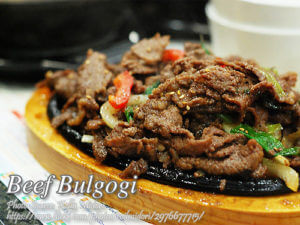Kimchi is a Korean relish which some Pinoys have come to love as one of their favorite appetizer. Probably you are wondering why I posted this vegetable recipe in a meat recipe blog? It’s because kimchi is a very good relish to fried or grilled meat dishes. To give you a little background on this dish, this spicy relish appears at practically every meal and eaten with steaming hot rice which helps Korean farmers keep warn in the long hard winter.
Kimchi: First Taste of Kimchi
I remember the first time I tasted kimchi. It was during a family reunion in Quezon City when my cousin Maricel came home from Seoul, bringing jars of this bright red, pungent side dish. At first, I wasn’t sure what to think. The aroma was strong, the flavor sour-spicy, and yet after one bite, I was hooked. Over the years, it has slowly found its way to our family table, often paired with fried pork chops, grilled bangus, or even sinangag on lazy Sunday mornings.
Why We Love This Spicy Relish
Though it’s originally Korean, kimchi has become a comfort food for many Filipinos. My Uncle Ramon always says it reminds him of atchara, only braver and bolder in taste. Koreans traditionally enjoy it with steaming hot rice to warm themselves during winter, but in our tropical kitchens, it serves a different purpose—it brightens up rich, greasy dishes and cuts through the fat with its tangy kick.
When my sister Liza visited Busan years ago, she told me every meal came with this relish. It didn’t matter if it was breakfast or dinner, there it was, adding color and flavor. She even learned how to make a batch from her Korean host family, and that’s how this recipe eventually landed in our household.
Preparing the Cabbage the Right Way
The first step is soaking napa cabbage in brine. Some might think this is just for flavor, but it actually serves two purposes. One, the salt draws out excess water from the leaves, keeping the finished relish crisp instead of soggy. Two, it creates the perfect base for fermentation, which is where the signature tang comes from.
My Tita Fely insists on weighting the cabbage down with a plate to make sure it’s fully submerged. According to her, if even a few leaves float above the water, they dry out and ruin the batch. She’s right—after hours of soaking, the cabbage softens and bends without breaking, making it ready to absorb all the seasonings later.
Mixing the Aromatics and Spices for Kimchi
Here comes the fun part. Once drained, the cabbage is tossed with garlic, ginger, scallions, salt, and chili pepper. The red color is not just for looks—it signals heat and depth of flavor. If you prefer a milder taste, you can always adjust the chili flakes, but in our house, my brother Jojo always says, “The redder, the better.”
This step is important because mixing ensures every leaf is coated evenly. Some beginners just sprinkle the spices on top, but you’ll get uneven flavor that way. Use clean hands or a spatula to massage the seasoning into the cabbage. The more thorough the mixing, the more balanced the relish will taste once it ferments.
Fermentation and Storage of Kimchi
The seasoned mixture is then packed into sterilized jars. Don’t be tempted to eat it right away—it needs at least two days in the refrigerator for the flavors to meld. My cousin Maricel says she likes to wait a whole week before digging in because the longer it sits, the deeper the sourness gets.
This technique works because fermentation allows natural bacteria to thrive, creating that signature tangy, almost fizzy taste. It also acts as a natural preservative. That’s why this relish keeps well for weeks in the fridge, making it perfect for busy families who want something quick to serve with meat or rice.
A Bite of History
Did you know that kimchi dates back more than two thousand years? In ancient Korea, it began as a way to preserve vegetables for the harsh winters. Over time, chili peppers, introduced from the Americas in the 16th century, gave it the fiery flavor we know today. This blend of old tradition and new influence is one reason the dish resonates with Filipinos—we too have a long history of pickled and preserved foods, from burong mangga to bagoong.
Bringing It All Together
Every time I open a jar of homemade spicy cabbage relish, I’m reminded of family gatherings and shared meals. It’s more than just a side dish; it’s a bridge between cultures and generations. From my cousin who first introduced it, to my sister who learned the recipe abroad, to my uncle and tita adding their own advice, this dish has become part of our family story.
So the next time you fry up some pork belly or grill chicken inasal, try pairing it with this relish. Who knows, it might just become a staple at your table too—crisp, spicy, sour, and bursting with flavor, just the way our family loves it.
How to Make Kimchi (Spicy Cabbage Relish)
Ingredients
- 1 head Chinese cabbage about 1/2 kilo to 600 grams
- 10 cups water just enough to cover the cabbage
- 5 Tbsp. salt divided
- 1/2 cup chopped green onion
- 1/4 cup minced garlic
- 3 tsp. crushed red chili pepper
- 1 tsp. chopped ginger
Instructions
How to make Kimchi or Spicy Cabbage Relish:
- Slice the Chinese cabbage into 3/4 to 1 inch strips or squares.
- Combine water and 3 tablespoons of salt. Stir until salt is dissolved.
- Soak cabbage in the brine solution in a large glass bowl about 5 to 10 hours in the refrigerator (You can put a weighted plate to keep the cabbage submerged in water.) Drain.
- In a bowl combine cabbage, green onions, 2 tablespoons salt, garlic, red chili pepper and ginger.
- Mix well to combine. Correct seasoning if you want more salt or chili.
- Transfer cabbage mixture into a large sterilized jar. Cover and refrigerate 2 days or up to a week before serving.
- Serve as a relish or salad. This keeps well for weeks in the refrigerator. If you want a spicier taste and more reddish color, add more chili pepper flakes.
Notes
Cooking Tips:
Use the Right Salt
Always use coarse sea salt or rock salt when soaking the cabbage, not iodized salt. Iodized salt can interfere with fermentation and make the relish taste off. The coarse grains also help draw out water more effectively, keeping the leaves crisp.Pack the Jar Properly
When transferring the seasoned cabbage into jars, press it down firmly to remove air pockets. Air can cause uneven fermentation and spoil the batch. A tightly packed jar ensures the flavors develop consistently and safely.Control the Fermentation Time
Leaving your kimchi longer in the fridge gives it a tangier, stronger flavor, while a shorter time makes it milder and fresher. Beginners often prefer the two- to three-day mark, while seasoned eaters enjoy a week or more. Taste as you go so you can find the sourness level that suits your family best.






You lack something that will bind the pepper flakes to the cabbage,which is a paste. A thick,soupy concoction made out of sweet rice flour (Malagkit) or regular flour will help bind all ingredients together.
For this, probably 1/3 cup of water and 2/3 or 1tbs of flour cooked for 10 mins until it resembles a thick soup (slightly thicker than cream of mushroom soup) will help. This will also help with the fermenting process.
For those asking where to buy red pepper flakes, Wang Mart in Don Antonio Heights has it.
Hi Donna Marie, I think it depends if you want to use a binder or not. There are lots of kimchi recipes that don’t have a binder using flour.
Hello, can i replace chinese cabbage with the usual cabbage in the market? Thanks!
@len,
I don’t think it will taste the same as the Chinese cabbage. But you can experiment and see if that is possible. By the way, you can’t miss Chinese cabbage in the wet market, they are lots of it there and it is also called pechay baguio.
i just love your recipes. tnx